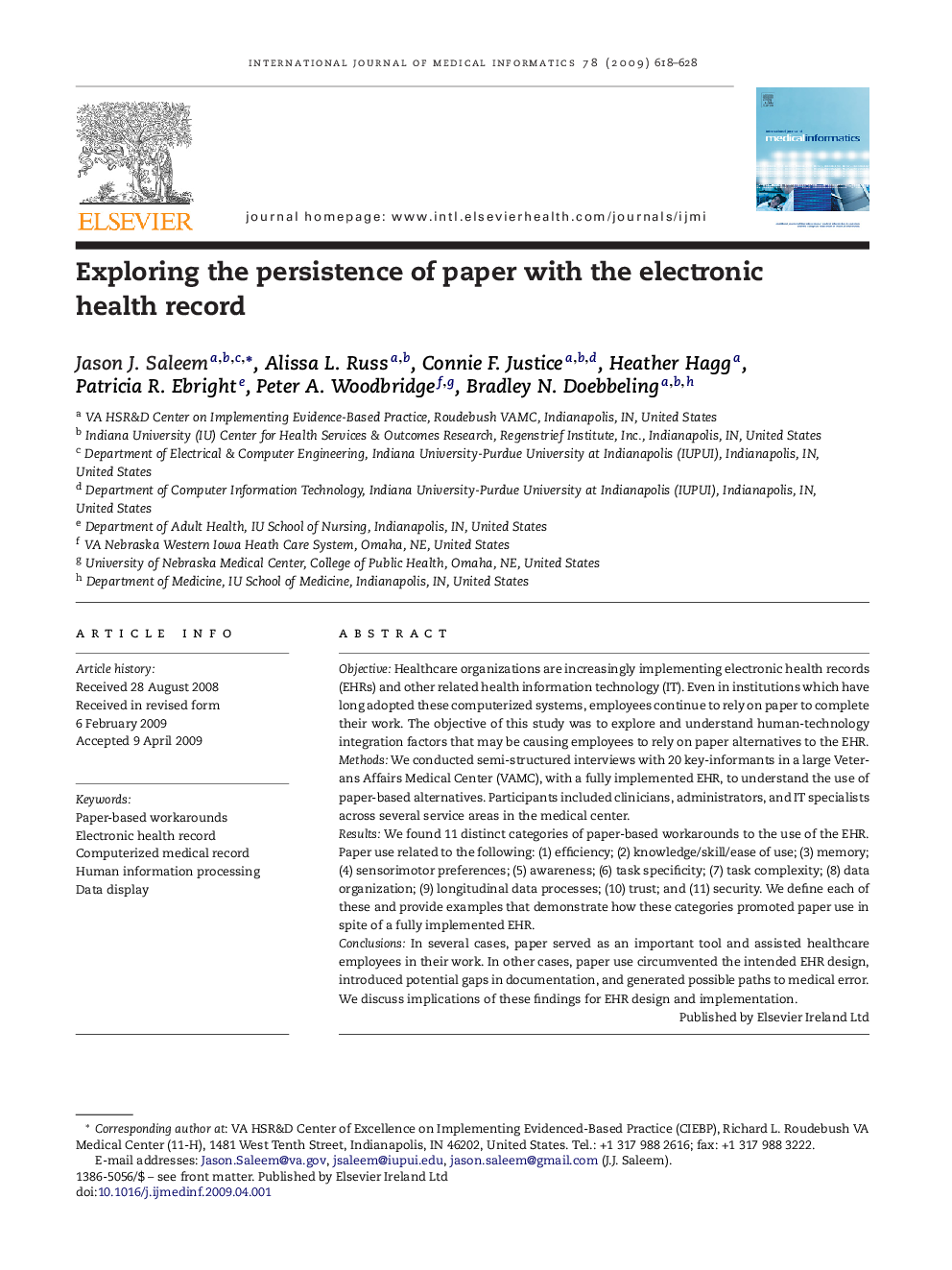| Article ID | Journal | Published Year | Pages | File Type |
|---|---|---|---|---|
| 516356 | International Journal of Medical Informatics | 2009 | 11 Pages |
ObjectiveHealthcare organizations are increasingly implementing electronic health records (EHRs) and other related health information technology (IT). Even in institutions which have long adopted these computerized systems, employees continue to rely on paper to complete their work. The objective of this study was to explore and understand human-technology integration factors that may be causing employees to rely on paper alternatives to the EHR.MethodsWe conducted semi-structured interviews with 20 key-informants in a large Veterans Affairs Medical Center (VAMC), with a fully implemented EHR, to understand the use of paper-based alternatives. Participants included clinicians, administrators, and IT specialists across several service areas in the medical center.ResultsWe found 11 distinct categories of paper-based workarounds to the use of the EHR. Paper use related to the following: (1) efficiency; (2) knowledge/skill/ease of use; (3) memory; (4) sensorimotor preferences; (5) awareness; (6) task specificity; (7) task complexity; (8) data organization; (9) longitudinal data processes; (10) trust; and (11) security. We define each of these and provide examples that demonstrate how these categories promoted paper use in spite of a fully implemented EHR.ConclusionsIn several cases, paper served as an important tool and assisted healthcare employees in their work. In other cases, paper use circumvented the intended EHR design, introduced potential gaps in documentation, and generated possible paths to medical error. We discuss implications of these findings for EHR design and implementation.
